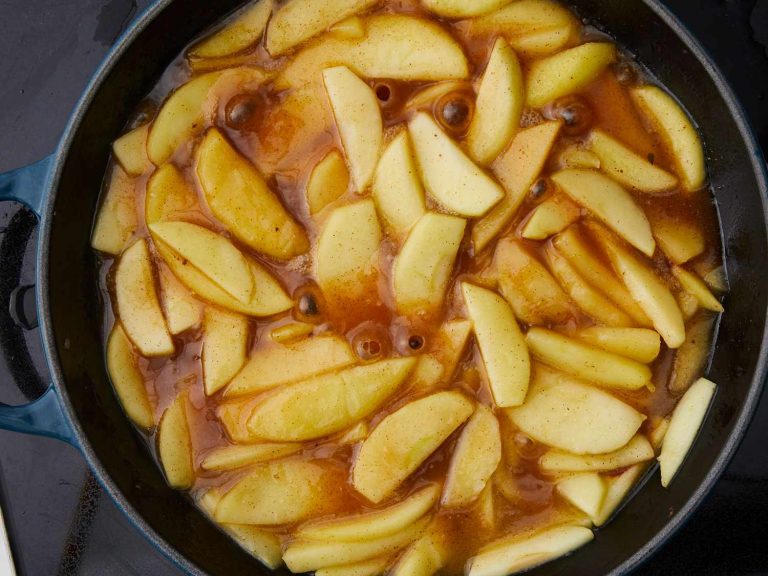Spicy Pork Sausage: Origins, Cooking Tips, Pairings, and Nutritional Insights
Spicy pork sausage has a long and rich history. Ancient civilizations, including the Romans and Greeks, created early versions of sausages using ground meat and spices. Romans introduced spices like pepper and coriander, adding a distinct flavor to their sausages, as noted in historical texts. By the Middle Ages, European methods of sausage-making had evolved, with regions like Italy and Spain developing unique, spiced varieties. These sausages became essential in food preservation, as curing and seasoning extended their shelf life.
Global Influence and Variations
Spicy pork sausage enjoys diverse global variations, each influenced by local flavors and ingredients. Chorizo, a Spanish and Mexican favorite, incorporates smoked paprika and garlic. Italian sausage varieties, like salsiccia, mix garlic, fennel seeds, and red pepper flakes. Notable Asian versions include China’s lap cheong, featuring rice wine and soy sauce, and Thailand’s sai ua, enriched with lemongrass and galangal. These variations showcase the adaptability of spicy pork sausage, catering to regional palates and culinary traditions.
Key Ingredients in Spicy Pork Sausage
Types of Pork Used
Producers use different cuts of pork for spicy pork sausage. Common cuts include pork shoulder, belly, and loin. Pork shoulder is the most popular due to its high fat content and balanced meat-to-fat ratio, which enhances flavor and moisture. For leaner sausages, loin cuts are ideal, ensuring less fat content while retaining tenderness. In some recipes, belly cuts add extra richness, creating a more indulgent sausage.
Spices and Seasonings
Varieties of spices shape the distinct flavor profiles of spicy pork sausage. Essential spices include:
- Paprika: Adds smoky flavor and vibrant color. Spanish chorizo uses this extensively.
- Garlic: Offers pungency and depth. Both Italian salsiccia and Spanish chorizo feature it.
- Fennel Seeds: Impart anise-like sweetness. Common in Italian sausages.
- Cayenne Pepper: Delivers heat. Frequently used in Creole and Cajun sausages.
- Black Pepper: Enhances overall flavor. Found in most spicy sausage recipes.
- Chili Flakes: Provide heat and texture. Used in various global versions.
Other seasonings, like oregano, thyme, and bay leaves, contribute additional layers of complexity. In Asian versions, soy sauce and ginger can also be integral, highlighting regional flavor adaptations.
In creating spicy pork sausage, the combination of high-quality pork cuts and carefully chosen spices and seasonings ensures a rich, memorable culinary experience.
Cooking Techniques for Spicy Pork Sausage
Grilling vs. Frying
Grilling spicy pork sausage enhances its smoky flavor. Use medium heat to avoid burning. Rotate sausages every few minutes to ensure even cooking. Expect grill marks to form as a sign of good caramelization.
Frying offers a crispy exterior. Use a heavy skillet for even heat distribution. Start with a cold pan to render fat gradually, preventing burning. Fry for 10-12 minutes, turning frequently to brown all sides.
Tips for Perfectly Cooked Sausage
Achieve ideal internal temperature. Aim for 160°F (71°C) using a meat thermometer.
Pre-cook sausages briefly. Simmer in water for 5-7 minutes, then finish on the grill or skillet for even doneness and juiciness.
Avoid piercing sausages. This retains juices and maintains flavor.
Let sausages rest for 5 minutes before serving. This allows juices to redistribute, improving the texture.
Pairing Spicy Pork Sausage with Other Foods
Best Side Dishes
Pairing spicy pork sausage with the right side dishes enhances the overall meal. Classic options include roasted vegetables like bell peppers, zucchini, and eggplant. Their natural sweetness balances the sausage’s heat. Consider mashed potatoes with garlic or butter for those who prefer a creamy texture. They provide a contrasting yet complementary mouthfeel.
Quinoa or couscous salads with fresh herbs and citrus dressings add a refreshing bite. If you enjoy a bit of crunch, opt for coleslaw with a vinegar-based dressing rather than a creamy one. The acidity from the vinegar contrasts well with the sausage’s spicy flavor.
Wine and Beverage Pairings
Choosing the right beverage to accompany spicy pork sausage elevates the dining experience. Opt for bold red wines like Zinfandel or Shiraz to match the sausage’s robust flavors. These wines feature fruity notes and peppery undertones, aligning with the smokiness of the sausage. Beer lovers may prefer lagers or pale ales, which offer a refreshing counterbalance to the spice.
Non-alcoholic options include sparkling water or lemonade. Their acidity and carbonation cleanse the palate, making each bite of sausage more enjoyable. For a warming drink, try ginger tea. Its spiciness matches the sausage while adding another layer of flavor.
Health and Nutritional Aspects
Caloric Content and Serving Sizes
Understanding the caloric content of spicy pork sausage is essential for maintaining a balanced diet. One link of spicy pork sausage, typically 85 grams, contains approximately 280 calories. The calorie count varies based on ingredients and preparation methods. For instance, grilling may reduce fat content compared to frying. Serving sizes can also impact your intake. A standard serving size is one link, but it’s common to consume more, increasing calorie intake. Consider pairing with low-calorie side dishes to balance meals.
Benefits and Concerns
Spicy pork sausage offers several nutritional benefits. It’s a good source of protein, providing about 14 grams per serving. Protein is crucial for muscle repair and overall health. The sausage also contains important vitamins and minerals such as Vitamin B12, Zinc, and Iron. However, there are concerns to be mindful of, particularly its high sodium and fat content. One serving can have up to 23 grams of fat and 800 milligrams of sodium, contributing to heart disease if consumed excessively. Moderation is key to enjoying the flavors while managing health risks.
Conclusion
Exploring the world of spicy pork sausage opens up a realm of flavors and culinary techniques. Whether you enjoy it grilled or fried, paired with a bold wine or a refreshing non-alcoholic beverage, this versatile sausage can elevate any meal. While it’s rich in essential nutrients, remember to savor it in moderation due to its high sodium and fat content. With the right balance, you can relish the unique taste and cultural heritage of spicy pork sausage while maintaining a mindful approach to your health.






